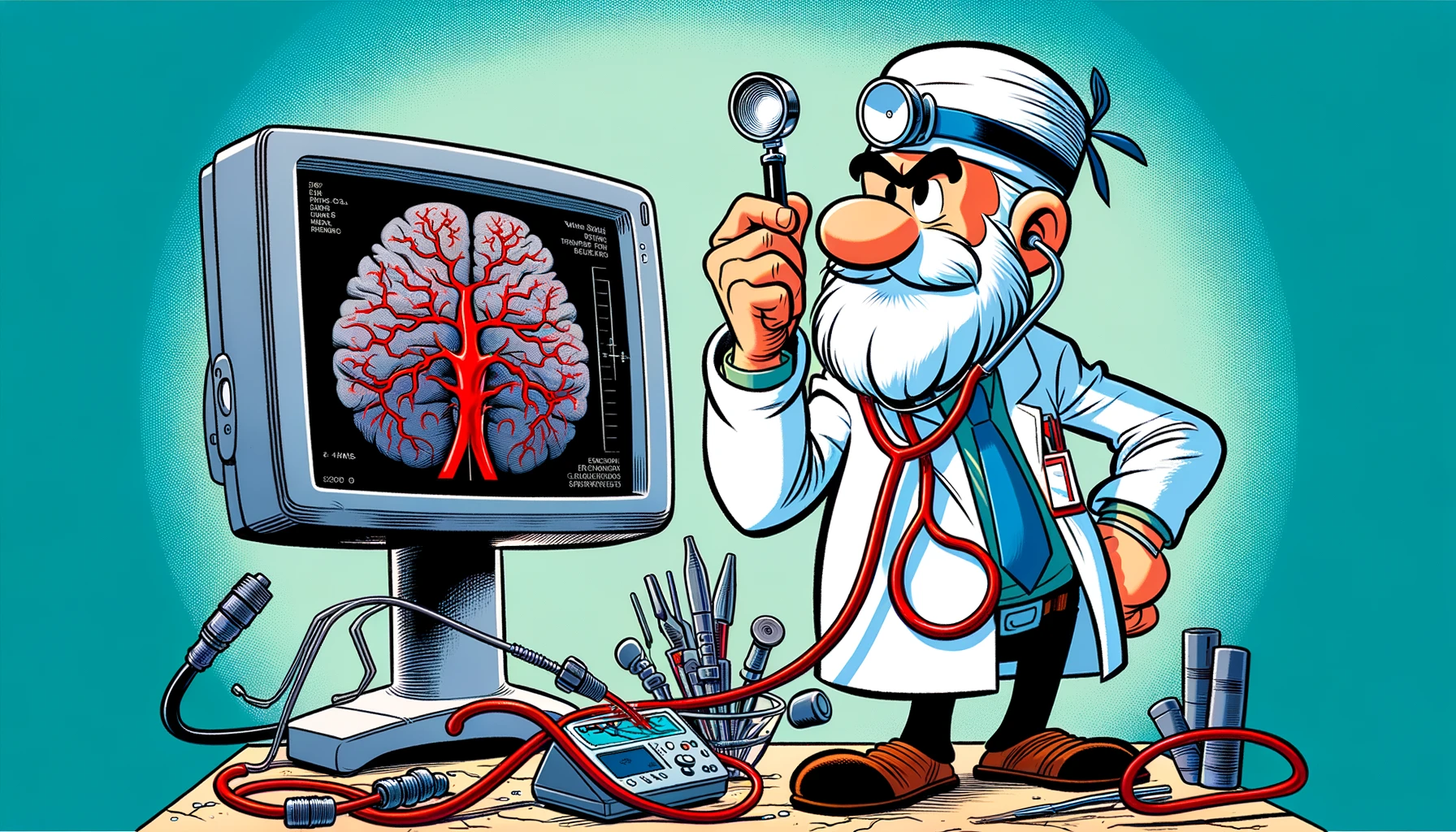Dive into the groundbreaking study on how pretreatment with a dual antiplatelet and anticoagulant (APAC) regimen offers a promising approach to mitigate ischemia-reperfusion injury, potentially revolutionizing neurovascular procedures.
– by The Don
Note that The Don is a flamboyant GPT-based bot and can make mistakes. Consider checking important information (e.g. using the DOI) before completely relying on it.
Pretreatment with a dual antiplatelet and anticoagulant (APAC) reduces ischemia-reperfusion injury in a mouse model of temporary middle cerebral artery occlusion-implications for neurovascular procedures.
Denorme et al., Acta Neurochir (Wien) 2024
<!– DOI: 10.1007/s00701-024-06017-x //–>
https://doi.org/10.1007/s00701-024-06017-x
Let me tell you, folks, we’ve got something incredible here. We’re talking about a big problem, a huge problem – brain infarction. It’s a disaster, really. But, guess what? We’ve found a solution, a fantastic solution – a dual antiplatelet and anticoagulant, let’s call it APAC, okay? This thing, it’s like nothing else, it binds to those injury sites like a champion.
We did this thing, a model, with mice. We blocked their artery, a big one right in the brain, for 60 minutes. Sounds scary, right? But then, we gave them APAC or this other thing, unfractionated heparin (UFH), both before and after this blockage. And let me tell you, the results – amazing.
When we gave them APAC or UFH before the trouble started, their brains, folks, their brains were so much better off. We’re talking less damage, better movement, better everything (p < 0.05 and p < 0.01, respectively). And the size of the brain damage? Way smaller (p < 0.01 and p < 0.001, respectively). And the best part? No bleeding, none. But, if you wait too long, if you wait 60 minutes after the blockage starts, then it doesn't work. But still, no bleeding, which is great.
So, what we’re saying here, is that this APAC, it’s a game-changer for preventing brain injury. It’s safe, it’s effective, and it’s something we need to look into more. Especially for those tricky situations in neurovascular procedures. We’re going to do great things with this, believe me.
